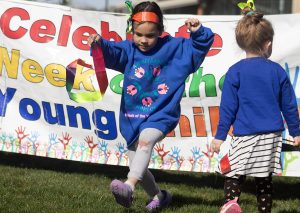From the CTUIR Vocational Rehabilitation Program
On June 2, Vocational Rehabilitation turned 100 years old. President Woodrow Wilson signed into law the Smith-Fess Act of 1920, which established the first federally funded program to assist people with disabilities who had not acquired their disabilities as a result of serving in the military.
During the last four decades, more than 83 Tribal Vocational Rehabilitation (TVR) programs have been created.
The Confederated Tribes of the Umatilla Indian Reservation (CTUIR) have been offering vocational rehabilitation services since 2010.
The CTUIR’s tribal program will celebrate the 100th birthday in October during Disabilities Awareness Month and staff is inviting the community to attend when the time and date are set.
Susie Calhoun, program manager, has been with the program “since inception.”
“We started from scratch. We didn’t have a form, we didn’t have anything, and we’ve been working with our participants on reaching their employment goals ever since Oct. 1, 2010.”
During that time, the program has served 200 people, according to Calhoun. The program serves tribal members from any federally recognized tribe living on or near the Umatilla Indian Reservation, and refers unenrolled Indians and non-Indians with a “warm hand off” to state and local partner organization such as the State of Oregon Vocational Rehabilitation.
When participants “walk through the door,” they meet with program staff – Calhoun, Janine Winn and Joanna Malumaleumu – and collaboratively develop an Individual Plan of Employment (IPE).
Calhoun says they aren’t “cookie cutter” or “one-size-fits-all” plans.
“If you want to be employed by the Tribe and you don’t even have a GED, there are steps you take to get there. Each individual we work with makes the choice of what they are willing to do as we prepare their Individual Plan of Employment,” but each person is on an employment path with the program, Calhoun said.
Creating the IPE takes as much or as little time as needed.
“It is a one-on-one and intensive process looking at what the best fit for that person is. We do assessments and lots of exploration with people, but it all comes back to them and their choice of how to meet their goal. Then how to achieve this gaining or using their skills and abilities for the job they are seeking,” Calhoun said.
One participant may focus on their health and wellness and discover they needed glasses, while another participant may want to start their own business.
“We meet the unmet needs of people, and sometimes they don’t even know they have a disability – because we don’t see people through their disability, we see the person and their abilities and partner with them to work on their employment goals,” Calhoun said.
When the program isn’t the right fit or it isn’t the right time, that’s okay too.
“We’ve had a few people come in and start the process and decided they just weren’t ready or going to go to work, so they opted out and that’s fine. We always tell them the door is open.”
For more information or to schedule an intake, email tvr@ctuir.org.



